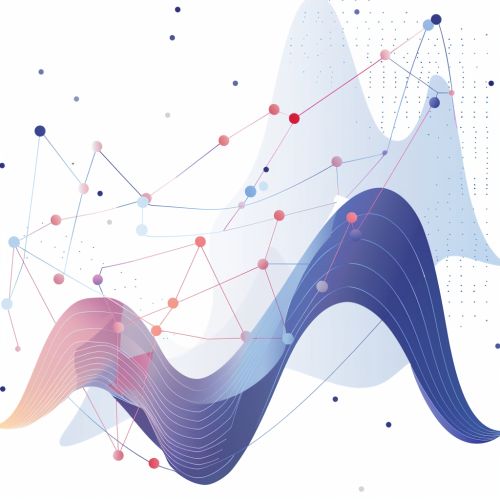Non-parametric model
Introduction
A non-parametric model is a type of statistical model that does not assume a specific form for the underlying population distribution. Unlike parametric models, which are characterized by a finite set of parameters, non-parametric models are more flexible and can adapt to the data's structure without predefined assumptions. This flexibility makes non-parametric models particularly useful in situations where the form of the underlying distribution is unknown or complex.
Characteristics of Non-Parametric Models
Non-parametric models are distinguished by several key characteristics:
- **Flexibility:** Non-parametric models do not assume a specific functional form for the data distribution. This allows them to model complex relationships that parametric models might miss.
- **Data-Driven:** These models rely heavily on the data itself to determine the model structure, often using techniques such as kernel density estimation or nearest neighbors.
- **Infinite-Dimensional Parameter Space:** Unlike parametric models, which have a finite number of parameters, non-parametric models can have an infinite-dimensional parameter space. This allows for greater adaptability but also increases the risk of overfitting.
Types of Non-Parametric Models
Non-parametric models can be broadly categorized into several types:
Kernel Methods
Kernel methods are a class of non-parametric techniques that use a kernel function to estimate the probability density function of a random variable. The most common kernel method is Kernel Density Estimation (KDE), which smooths the data points to create a continuous density function.


Nearest Neighbor Methods
Nearest neighbor methods are based on the idea that similar data points are likely to have similar outcomes. The k-nearest neighbors algorithm (k-NN) is a popular example, where the outcome for a new data point is predicted based on the outcomes of its k nearest neighbors in the training data.
Splines and Smoothing
Splines and smoothing techniques involve fitting smooth curves to the data. Spline regression uses piecewise polynomials to model the data, while smoothing techniques like LOESS (Locally Estimated Scatterplot Smoothing) create a smooth curve through the data points.
Decision Trees
Decision trees are a type of non-parametric model that splits the data into subsets based on feature values. Each split is chosen to maximize the difference in the target variable between the resulting subsets. Random forests and gradient boosting machines are extensions of decision trees that improve their predictive performance.
Applications of Non-Parametric Models
Non-parametric models are used in various fields due to their flexibility and adaptability:
- **Economics:** In economics, non-parametric models are used to estimate demand functions, production functions, and other relationships where the functional form is unknown.
- **Medicine:** In medical research, non-parametric models are used to analyze survival data and to model complex relationships between patient characteristics and outcomes.
- **Machine Learning:** Non-parametric models are widely used in machine learning for tasks such as classification, regression, and clustering.
Advantages and Disadvantages
Advantages
- **Flexibility:** Non-parametric models can adapt to the data without assuming a specific form, making them suitable for complex and unknown distributions.
- **Data-Driven:** These models rely on the data to determine the model structure, which can lead to more accurate representations of the underlying relationships.
Disadvantages
- **Computational Complexity:** Non-parametric models often require more computational resources than parametric models, especially for large datasets.
- **Overfitting:** The flexibility of non-parametric models can lead to overfitting, where the model captures noise in the data rather than the underlying trend.
- **Interpretability:** Non-parametric models can be more difficult to interpret than parametric models, as they do not provide a simple set of parameters to describe the data.
See Also
- Parametric model
- Kernel Density Estimation
- k-nearest neighbors algorithm
- Spline regression
- Decision trees
- Random forests
- Gradient boosting machines
- Classification
- Regression
- Clustering
